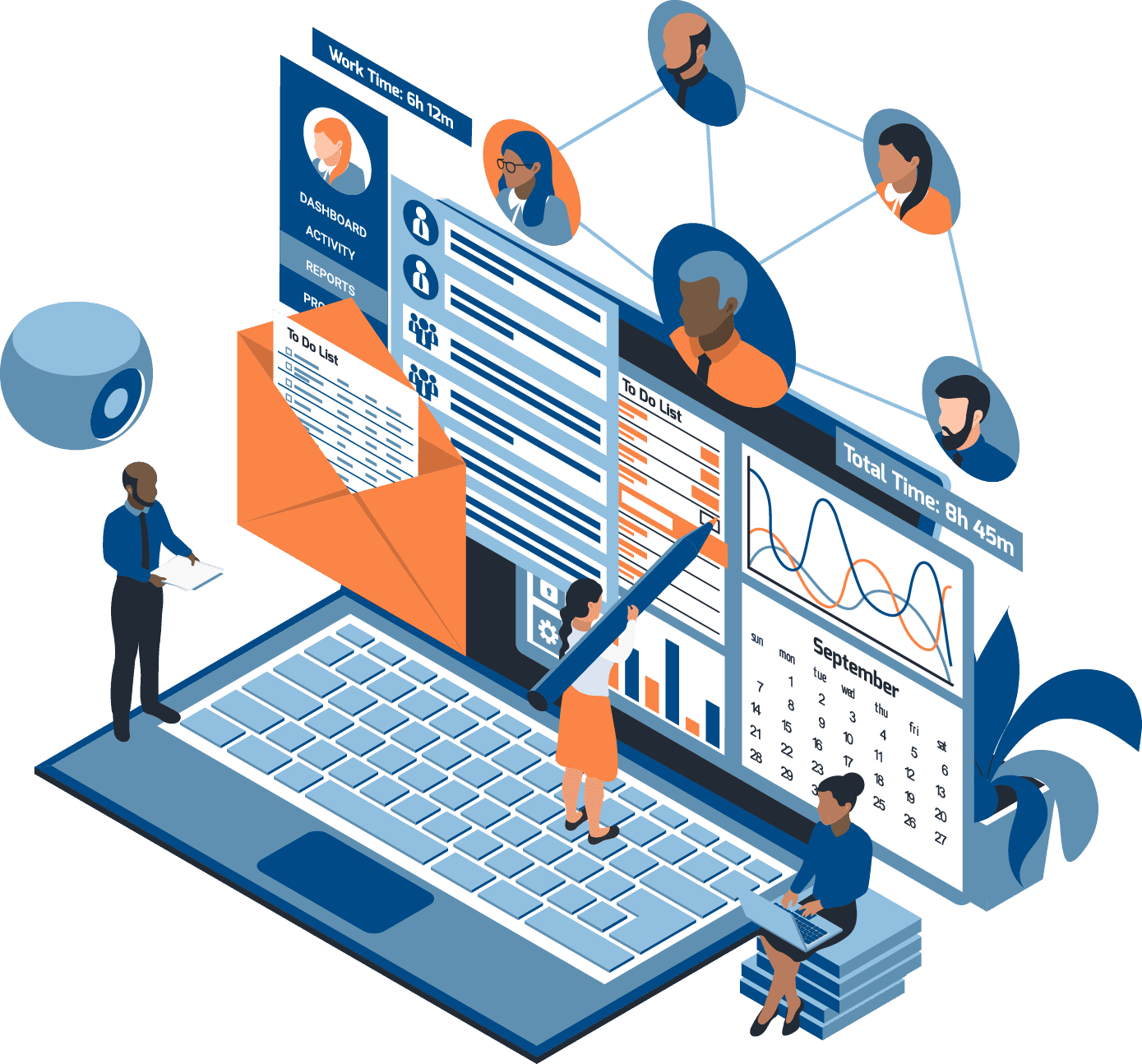What is Contextual Data and Why Does it Matter?
Strong customer relationships in the age of digital transformation aren’t a given. They require a thoughtful combination of EQ (Emotional Quotient) and TQ (Technical Quotient). But in most enterprises, customer data is siloed—gathered and stored separately in CRM, email, and calendar platforms—creating disconnects that created disjointed customer journeys and hinder customer-facing teams from able to align their efforts to guide customers on their journey.
Companies of all sizes in Financial Services and other regulated industries are beginning to pursue more elegant and sophisticated RevOps processes (from Salesforce and other sources) to route relevant customer data to the workflows their sales and service teams use most – in their inboxes and calendars. This means data must be properly curated and conditioned to make it “context-aware” so it can be routed through automation processes and workflows end users deem most effective. When an advisor is answering an email, the right, relevant, real-time CRM data must be available at their fingertips to inform the reply. When booking a meeting, CRM data and meeting data sensitivity classifications must be integrated into calendar views to ensure the right people get invited to meetings and that MNPI (Material Non-Public information) not be inadvertently shared – thereby causing an internal or external data security breach.
Sidebars like Salesforce’s and other Outlook Integrations say they bridge CRM and the major business communication platforms – so problem solved, right? Not quite. The difference is not in the “what” they say they do but is definitely in “the details” and “the how” – and this is why secure, relevant, and classified contextual data matters.

The Only Email Client Sidebar That Delivers Fully Compliant Customer 360 Data
IT data and security teams face a high hurdle when it comes to ensuring they empower their users with the right sidebar to meet their data privacy requirements AND improve data quality and comprehensiveness in their CRM.
One inefficient task repeated across hundreds of employees every day can lead to frustration and a painful number of days’ worth of lost productivity by the end of the year. A delay in data sync and visibility between platforms can create more than frustration – and unnecessary friction in a customer relationship. Worst of all, displaying the wrong data to the wrong person inside your organization can put you on a regulator’s list creating the risk of significant fines and avoidable brand damage.
Riva Insight is designed to boost the Technical Quotient of your customer-facing teams by delivering the right data, at the right time, in the right spot of the daily workflows they use to guide and nurture their specific clients’ journeys – their Book of Business. Our sidebar is context-aware, which means that the data we display from CRM dynamically reflects the information required as an advisor follows their customer journeys.
Eliminating task switching by shedding the burden of manually tracking (and re-entering) customer data from one platform to another creates is high on the list for advisors and end user satisfaction. The time they save is freed up more time so advisors and revenue generators can focus on the higher value activities of prospecting, following up with strategic accounts, and winning better and more deals faster. And because Riva syncs customer data with full compliance and governance to industry regulations, you can rest easy knowing only those users with the right data visibility permissions are getting access to your clients’ data.
Surfacing Meaningful Data to Enhance Your Teams’ Productivity
One of Riva’s most compelling features is that is tightly integrated with platforms that customer-facing teams use, live, and work in each and every day. Riva’s longstanding partnership with Salesforce and over 200 Financial Services customers that trust Riva’s demonstrated ability to seamlessly integrate Outlook and Google Workspace with CRM have made us a leader in Financial Services customer data operations – able to tackle the enterprise challenges other connectors can’t. Designed with a pass-through architecture, Riva works behind the scenes, connecting platforms, conditioning, and curating customer data—without storing it. Here are a few examples of the quiet power Riva brings to enterprise advisors and revenue generators:
- Emails
Riva brings instant context to previous communications and activities like emails and meetings—including customer needs details and who on your team and across other teams, as appropriate, is already interacting with that client and in what capacity. Riva provides a well-organized view of customer conversations and email attachments across multiple CRM users, allowing easy access to conversation threads at the contract, account, deal, product, opportunity, case, customizations, and custom object level. CRM users can see the email thread from start to finish and click on it the relevant content to drill into the subsequent emails in the thread, eliminating the need to store the growing email content in multiple individual emails in Salesforce. Rather than logging the entire thread each time, Riva logs only the most recent interaction, making it easy for customer-facing team members to get the Customer 360 view of email conversations without wading through dozens of emails that contain repetitive information. - Meetings
Riva seamlessly integrates calendar events across multiple platforms to provide a Customer-360 view of client interactions from both CRM calendars and email information. This capability allows team members to surface meeting-related emails for easy identification of who’s involved, when related meetings took place, and what was discussed (through integrated and/or automated sharing of Meeting Notes) and tasks and follow-ups that are created and/or delegated as an outcome of the meetings. Through Riva’s real-time sync capabilities, key meeting data is at the right users’ fingertips where and when they need it to inform and support each customer’s journey – along their entire journey. - Subject-Matter Expertise and Client Research
Riva’s data integration capabilities provide team members with immediate insights and details on each customer’s journey across all participants and contributors to the enterprise journey experienced by your clients. Team members can perform in-depth due diligence to inform each customer interaction by learning which team members have had previous interactions with the prospect company—and even specific individuals—and what was discussed during those engagements. - Data Quality = Trust in CRM
Riva instills confidence in client-facing team members and customers by improving data quality. Advisors and revenue generators can rely on automatically updated customer data that’s free from gaps and errors resulting from manual re-entry or omission; compliance concerns are alleviated by Riva’s ongoing, industry-specific regulatory updates; and data security and privacy are protected with pass-through data integration that shares data between platforms—but never retains it.
Riva’s unique set of client advisor tools and improved workflows offers a game-changing potential for stakeholders throughout the enterprise to pursue their Book of Business, exceed customer expectations, and deliver levels of service that can build longer-term relationships. We invite you to discover more about Riva and our Insight client advisor engagement tools.

